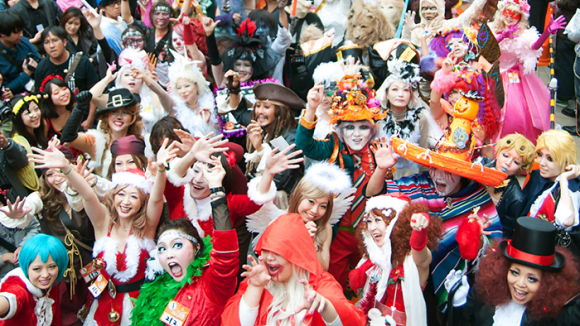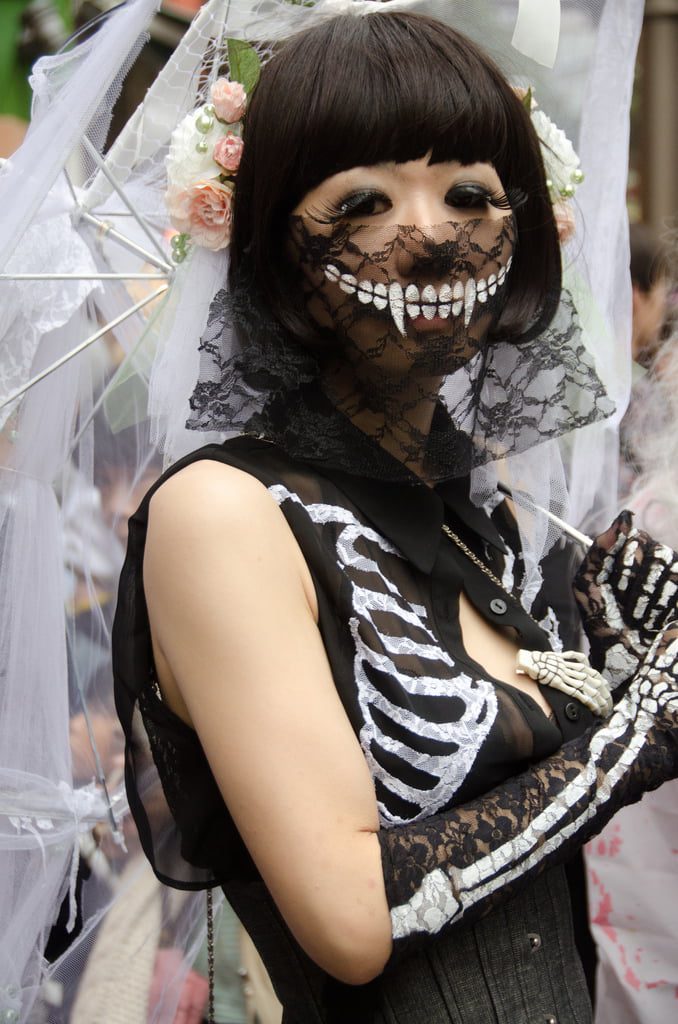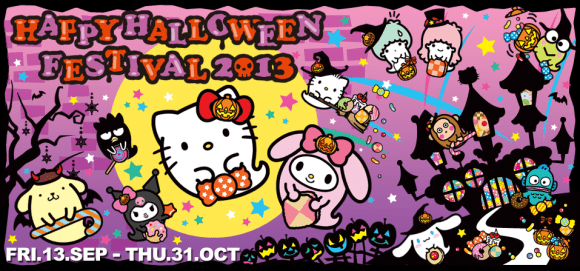When I was in Tokyo 8 years ago on a scholarship, the cult of Halloween was already pushing its way into Japan. Jack-o’-lanterns, witches, and ghosts were all over the shops in October, where they took over the window displays. You could see the signs that Halloween was just around the corner, but it didn’t go much beyond the decorations, the pumpkins, and the witch-shaped goodies one could eat. In the past few years, though, Halloween has exploded in popularity, with restaurants and night clubs holding a wealth of Halloween parties throughout October. The Kawasaki Halloween Festival, which started 18 years ago but wasn’t very popular initially, has now come into its own, with huge numbers of participants wearing costumes.
The Yamanote Halloween Train, also known as the Gaijin Train, which was banned by the authorities for so long that many people thought it was just an urban legend, has become extremely popular. The start of the Gaijin Train (Gaijin means foreigner) apparently dates from 1990 or 1991, when a group of foreigners living in Tokyo put on Halloween costumes and got on Tokyo’s Yamanote railway line to celebrate. The Yamanote line is Tokyo’s longest, and one of the oldest railway lines. It runs in a circle, stopping at 29 stations and takes about an hour to go right round. Of course, if you want, you can stay on the train all day long, going around in circles beneath downtown Tokyo.
The passengers on the Gaijin Train have been breaking all the rules of railway riding. They brought along alcohol, were noisy, and made a game of hopping from one car to the next just as doors were closing. The authorities were clearly not pleased. Sometimes they have actually halted the trains and forced the passengers off. There was a time when the English language newspapers let people know how to join in but nowadays the social media tells people exactly what day and what train the party is to start on, which is open to all foreigners and all of the growing number of Japanese who wish to join them.
Japan is the home of ‘cosplay’ (costume play), where young people love to dress up as a favorite anime or video game avatar. It therefore shouldn’t be a surprise that Halloween costume parades quickly became popular among young adults. Even people who normally skip cosplay events go for Halloween. Thanks to the social media, the photos of people in costume get shared in seconds and that just further enhances the popularity of the costumes.
Theme parks have also been big contributors to Halloween’s popularity. Tokyo’s Disneyland has organized Happy Halloween parties for nearly 20 years, and Universal Studios Japan also organizes annual Halloween programs for all and sundry.
The Halloween tradition has no cultural roots in Japan. They remember their dead in August, at the Obon Festival, which is Buddhist in origin. This is the day when the ancestors who have departed return home. To help them find their way, the Japanese light lanterns or lamps. Families visit the graves of their ancestors and in many homes people leave out food and beverages for their ancestors at their home altars.
Of course, most of the Japanese who celebrate Halloween have no idea that in Anglo-Saxon culture it is really All Hallows' Eve, the day before All Saints’ Day and All Souls Day – the day of the dead – and not just a Celtic harvest festival. For them, Halloween is just another excuse to have fun. It has become a seasonal holiday, of which commerce and the service industries take full advantage, in much the same way as they do with Valentine’s Day and Christmas.
The pictures come from the following sources and are listed in order of appearance:
https://www.pinterest.com/pin/570620215257892104
http://en.rocketnews24.com/2013/10/14/trick-or-treat-a-concise-guide-to-halloween-attractions-in-japan
https://www.flickr.com/photos/totomai/6298716492/sizes/l/in/photostream
http://en.rocketnews24.com/2013/10/14/trick-or-treat-a-concise-guide-to-halloween-attractions-in-japan
http://en.rocketnews24.com/2013/10/04/special-halloween-treats-from-familiar-companies-in-japan




